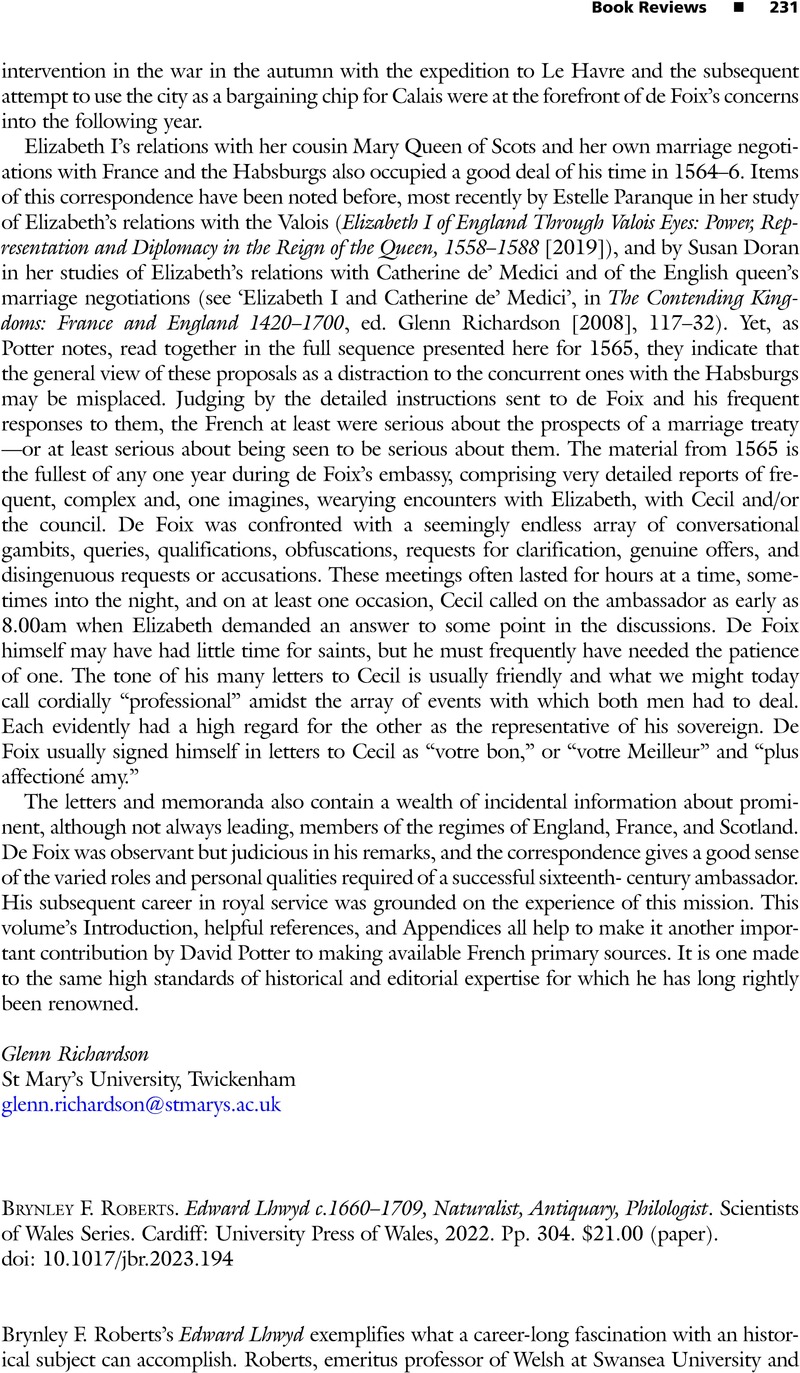No CrossRef data available.
Article contents
Brynley F. Roberts. Edward Lhwyd c.1660–1709, Naturalist, Antiquary, Philologist. Scientists of Wales Series. Cardiff: University Press of Wales, 2022. Pp. 304. $21.00 (paper).
Review products
Brynley F. Roberts. Edward Lhwyd c.1660–1709, Naturalist, Antiquary, Philologist. Scientists of Wales Series. Cardiff: University Press of Wales, 2022. Pp. 304. $21.00 (paper).
Published online by Cambridge University Press: 29 May 2024
Abstract
An abstract is not available for this content so a preview has been provided. Please use the Get access link above for information on how to access this content.

- Type
- Book Review
- Information
- Copyright
- Copyright © The Author(s), 2024. Published by Cambridge University Press on behalf of The North American Conference on British Studies



